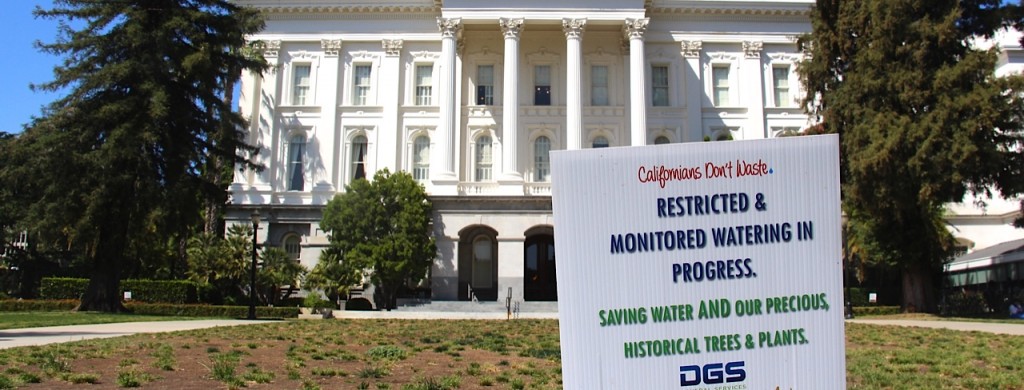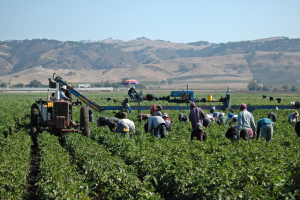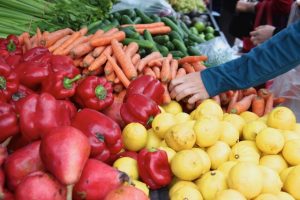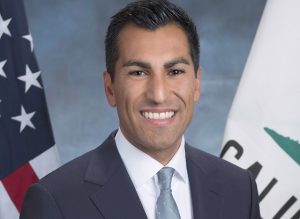
The Way Forward is to Build Community
August 28, 2015 Michael R. DimockBy Michael R. Dimock
Water is the primary topic in the food and agriculture world here in the state of California. The news media covers dozens of stories everyday. We learn that there’s not enough water now, but soon there may be too much. It seems the fight for control over water heats up in sync with the mean temperature. There are so many contradictions and unknowns it makes your head spin. It’s hard to define a meaningful response, but respond we must. And the best response, from my perspective, is to focus on the places you can most influence: home and community.
A very weird contradiction is at play. Degradation and poverty rise at the same time as abundance and wealth. Tens of thousands of farmworkers are without work and food insecurity in farm country is at disaster levels. Wells are running dry (1200 alone in Tulare County). Fires rage as never before. Two years of irrigating with salty groundwater has damaged thousands of acres of almond trees. The Great Valley is sinking as the aquifers collapse below the most productive farmland in the nation. Yet, for many farmers revenues are up and they are planting more almond and pistachios trees. The warmer weather has provided abundant harvests for farms with good water and prices are great.
Agriculture is very worried because although Governor Jerry Brown is vigorously defending agriculture from critics who charge farmers use too much water, he has also said that agriculture’s sacred cow, water rights, may need revision. And last weekend he said our new ground water policies are not aggressive enough to meet the challenge. Among the state’s most informed water experts there is a serious dialogue underway about adapting the water rights scheme that Australia created during its decade-long Millennium Drought. Some farmers like this idea and others don’t.
Meteorologists are predicting that El Nino and the Pacific Decadal Oscillation will deliver a massively wet year, while land stewards and government officials across the state are worried that torrential rains will cause flooding and slides. But then again, the west coast has a ridge of high pressure that has been holding storms at bay since 2011 and some say that ridge will remain in place and shunt water north and south and drought will persist.
Confusion and uncertainty can breed fear and fear can lead to the least desirable human behavior. I believe the root of Trump’s current success is his manipulation of fear. Blaming immigrants for America’s problems is a clear example.
The food movement’s best response to the growing fears about the future is to get behind efforts that build local and regional resilience. We need more robust and locally managed food, water and energy sheds that will support public health, economic and ecological resilience. We need more social cohesion among communities and neighbors. And we need a functional democracy that fosters discourse between people and policymakers. Those elected to serve must come to realize it is better to side with communities than with corporations.
Each one of us has a role to play in building community health and resilience. We can form or participate in a food policy council, join a CSA or local food-buying club. We can become involved with the local Grange or a Slow Food chapter and focus purchases on local sources. We can send a donation to a nonprofit doing good work or give to a crowd funding campaign to launch a business that is solving problems not causing them. We can participate in policy change campaigns that strengthen community control over food, water and energy. And every community, every business and family, each person, can do a little more to save energy and water, to feed our families more sustainable and healthy food.
We as a nation and world are in the midst of a massive shift in thinking and behaving. The plant’s response to our misdeeds and the rapid changes in social norms and the economy is what makes our times feel so crazy and uncertain. It is a moment of creative destruction in which the old outmoded thinking and behavior is being replaced with the new. I see communities all over the nation engaging the change. The food movement is a vital element in the center of the change. There are over 200 food policy councils at work across the country, nearly thirty in California alone. They are innovating solutions, scaling up changes. They are pointing the way forward. And this gives me hope for the future. My own fear is kept in check by my faith in the human capacity to adapt and change, to become what is needed to thrive. Today, that means embracing reality and reversing the damage we have done to the earth’s systems and its life forms. It means fostering social cohesion and collaboration to create health and resilience for every community.
Image: Doris Meier



